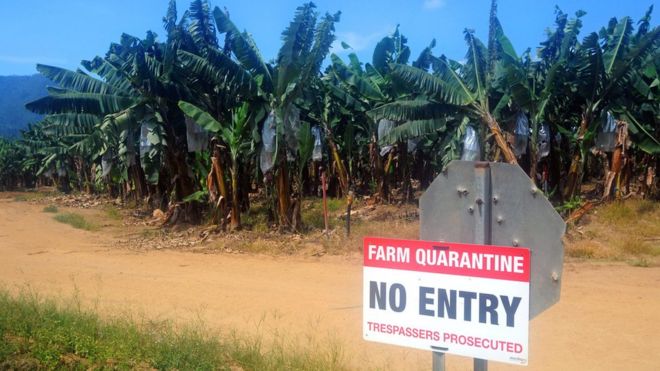Battling to save the world's bananas

Visiting the Matanuska banana plantation is not easy these days. After a two-hour drive from the nearest city in northern Mozambique, visitors who make it to the farm are stopped at the entrance and asked to dip their feet in pools of disinfectant. Even the cars get a bath.
Once an apparent miracle - a massive banana plantation in the middle of a dry, flat part of a desperately poor country - its formerly lush greenery has now been devastated by a deadly fungus called Panama disease.
Five years ago, Tropical race 4 (TR4), as it's formally known, was spotted here for the first time in Africa after killing off millions of bananas in Asia from the 1980s onwards.
The failure to contain the disease set off alarm bells around the world.
Could the banana, the world's most exported fruit and the source of nutrients for millions of people, be at risk of extinction?
The BBC was the first to be given access to the farm since it was hit with the disease.
We travelled all the way to Matanuska not just to observe the devastation but because the story of the plantation is about more than just bananas.
It's emblematic of unintended consequences of global trade - and the way that solutions to those consequences might come from some very unlikely places.
After our disinfectant baths, we continued down a long, red dirt road to what remains of the farm. It's strikingly lush.
Trundling along on metal zip lines are hands as they're known - carrying hundreds of bananas to a processing facility, where they too get the bath treatment before being shipped off in Dole-branded containers to the Middle East.